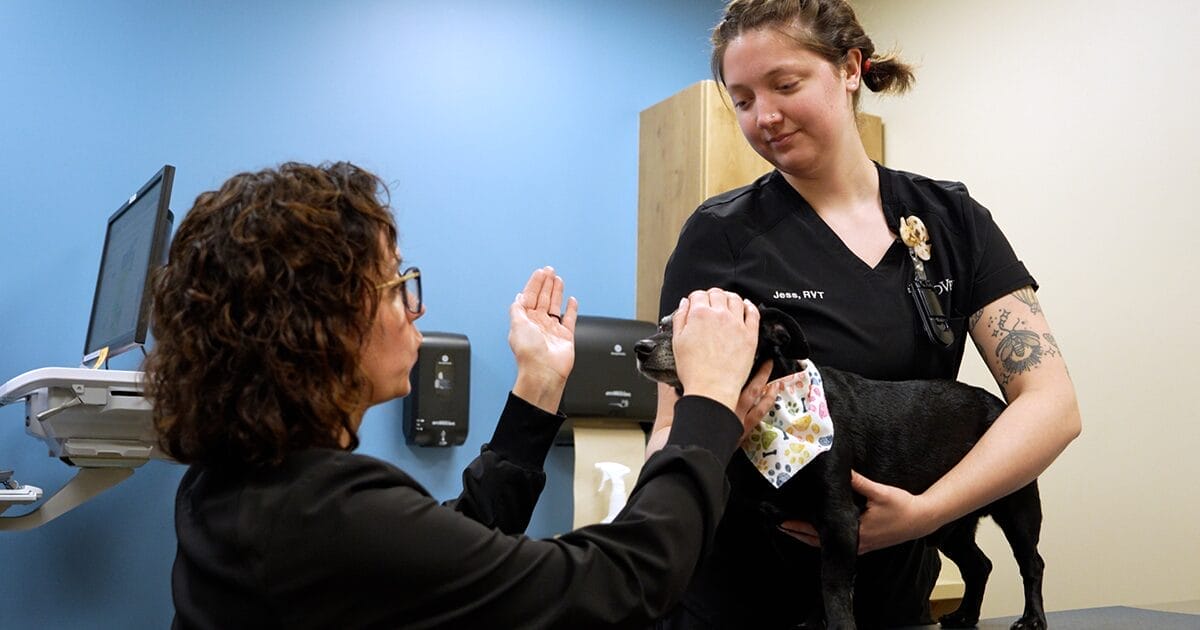
Understanding Cataracts and Cataract Surgery in Cats and Dogs: A Guide for Pet Owners
If your cat or dog's eyes appear cloudy, consult a veterinarian to check for cataracts. Learn the causes, signs, and treatment options.
As a pet owner, you understand how important your pet’s vision is to their overall quality of life. If your cat or dog’s eyes begin to appear opaque or cloudy, it’s essential to have them evaluated by a veterinarian to determine if they have cataracts. Your veterinarian may refer you to a veterinary ophthalmologist for further evaluation.
What are Cataracts in Pets?
The eye has a lens that helps it focus light on the back of the eye (retina), where vision occurs. If the lens becomes cloudy or opaque, that’s called a cataract. Cataracts impair vision by preventing light from focusing properly on the retina, leading to poor vision or blindness.
Causes and Signs of Cataracts in Cats and Dogs
Cataracts can affect cats and dogs of any breed and age. Certain dog breeds, such as Poodles, Bichon Frises, Retrievers, Terriers, and Cocker Spaniels, are more prone to developing cataracts due to genetic factors.
In cats, hereditary cataracts are uncommon, but they can occur secondary to other health issues, including chronic uveitis, trauma, systemic infections like feline leukemia virus or FIV, or hypertension. Congenital cataracts have also been observed in some kittens.
The development of cataracts can be attributed to various factors, including genetics, age, diabetes, intraocular inflammation, trauma, or exposure to certain chemicals. Notably, diabetes mellitus is a significant cause of rapidly progressing cataracts in dogs, whereas diabetic cataracts are extremely rare in cats.
Pets with cataracts may exhibit several signs, including a cloudy or bluish appearance in the eye, difficulty navigating in low-light environments, and bumping into objects. They may also display visual confusion, such as hesitation on stairs or reluctance to venture outside at night.

Diagnosing Cataracts in Pets
During your pet’s initial consultation, a thorough ophthalmic examination will be conducted to assess the degree of visual impairment and the likelihood of cataract progression. This comprehensive evaluation may include a visual inspection, ophthalmoscopy, and ultrasound. Additionally, advanced diagnostic tools like electroretinography (ERG) may be employed to evaluate retinal function before surgery.
The extent to which cataracts affect your pet’s vision depends on the percentage of the lens affected. If cataracts cover less than 30% of the lens or are limited to one eye, they typically do not cause significant vision loss. However, if the opacity encompasses 60% or more of the lens, visual impairment is likely. In severe cases where opacity covers 100% of the lens, your pet may be blind in the affected eye. If your pet does become blind, they can lead fulfilling lives. Our blog post on caring for your blind pet offers tips to improve their quality of life.
Cataract Surgery: Restoring Vision in Cats and Dogs
Cataract surgery is a highly effective procedure that can restore vision in both cats and dogs. The surgery involves removing the cloudy lens and, in most cases, replacing it with an artificial lens to help restore vision.
Cataract surgery is typically performed by a veterinary ophthalmologist under general anesthesia. The procedure involves phacoemulsification, a technique that requires making a small incision in the cornea and using a thin probe to break up and remove the cataract. To enhance your understanding of cataract surgery, you can watch our accompanying video, which provides an overview of the procedure and what to expect.
Cataract surgery, often accompanied by intraocular lens (IOL) implantation, can significantly benefit both dogs and cats. The decision to use an IOL depends on various factors, but many pets can successfully undergo lens replacement surgery. IOL implants help restore near-normal vision, improving their quality of life.
Cataract surgery can substantially improve or restore a pet’s vision, enhancing their overall quality of life. However, as with any surgical procedure, potential complications such as hemorrhage, infection, glaucoma, inflammation, and retinal detachment must be considered.
The success rate for cataract surgery is generally high in both dogs and cats, ranging from 85-95% in dogs and around 90% in cats, particularly when pets have good retinal function and controlled inflammation. While outcomes can be favorable, surgery is often evaluated on a case-by-case basis.

Potential Complications and Risks of Cataract Surgery
While cataract surgery is generally considered safe, there are potential complications and risks associated with the procedure. These complications may include:
- Post-Operative Inflammation (Uveitis): Inflammation is a common complication that can be managed with medication.
- Infection: As with any surgical procedure, there is a risk of infection, which can be minimized with proper post-operative care.
- Retinal Detachment: A serious complication that requires immediate veterinary attention to prevent further damage.
- Glaucoma: Increased pressure within the eye that can lead to vision loss if not managed properly.
It’s worth noting that cats are more prone to chronic post-operative inflammation than dogs, necessitating extra monitoring. To minimize the risk of complications and ensure your pet maintains their sight, follow-up appointments with your veterinarian are essential.
Caring for Your Pet After Cataract Surgery
Proper post-operative care is important for a successful outcome after cataract surgery. Your veterinarian will provide personalized instructions on caring for your pet’s eyes during the recovery period. Key aspects of post-operative care include:
- Administering Medication: Your veterinarian may prescribe eye drops or ointments to prevent infection and inflammation. It’s essential to follow the prescribed dosage and administration schedule carefully. Our step-by-step video shows you how to give your pet eye drops. This video shows you how to administer ointment to your pet’s eyes.
- Monitoring for Signs of Complications: Keep a close eye on your pet for signs of potential complications, such as increased redness, discharge, or squinting. If you notice any unusual signs, contact your veterinarian promptly.
- Follow-Up Appointments: Schedule follow-up appointments with your veterinarian to monitor your pet’s progress and address any concerns or questions you may have.
To ensure a smooth recovery, your pet will likely need to wear an Elizabethan collar (e-collar) for two to three weeks to prevent them from rubbing or touching their eyes. Additionally, it’s recommended to limit activities that could increase intraocular pressure, such as jumping or playing, during the recovery period.

What to Expect if Your Pet Doesn’t Undergo Cataract Surgery
If cataracts are left untreated, they can continue to leak proteins into the eye, leading to inflammation and increasing the risk of complications such as lens luxation, retinal detachment, and glaucoma.
While retinal detachment is not typically painful, lens luxation, inflammation, and glaucoma can cause significant discomfort, and your pet may require pain management medication. To ensure your pet’s comfort, daily eye drops may be necessary, and regular ocular examinations are recommended to monitor the progression of cataracts and maintain their quality of life.
In cases where surgery is not an option, your veterinarian may recommend anti-inflammatory or pressure-lowering eye drops to help preserve your pet’s comfort and prevent further complications.
Understanding the potential consequences of untreated cataracts and the available treatment options enables you to make informed decisions about your pet’s care. If you’re concerned about your pet’s vision or suspect they may have cataracts, it’s essential to consult with a veterinarian to discuss the best course of action for their specific needs.
Learn more about veterinary ophthalmology.
FAQs
What are cataracts in pets?
What causes cataracts in pets?
What is the treatment for cataracts in pets?
What can happen to my pet if they don’t have cataract surgery?
Learn More
Regular eye check-ups for your pet help maintain their eye health and detect any potential health issues.
Veterinary OphthalmologyContents
Learn More
Regular eye check-ups for your pet help maintain their eye health and detect any potential health issues.
Veterinary Ophthalmology

